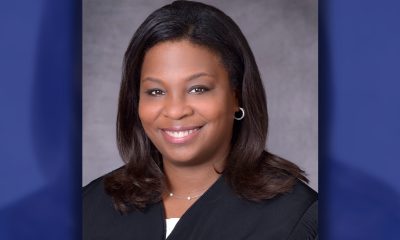#NNPA BlackPress
Only Time Will Tell Whether Opportunity Zones Live up to Their Promise
NNPA NEWSWIRE — Opportunity Zones were created as a component of the federal Tax Cuts and Jobs Act passed in December of 2017. Their purpose is to encourage investment in economically distressed communities by making it possible for investors to receive preferential tax treatment for investments made in businesses operating within nearly 9,000 Zones that have designated in every state in the U.S., as well as in the District of Columbia and five U.S. territories.
By Christopher G. Cox, publisher and managing editor, www.realesavvy.com
The potential for Opportunity Zones to reinvigorate thousands of communities throughout the United States is regularly praised by civic leaders and politicians, including President Trump during his State of the Union Address.
While Opportunity Zones clearly hold significant promise for attracting investment in otherwise neglected neighborhoods, it is still too soon to say they will be an unqualified success, according to Venroy July, a Baltimore-based attorney and partner with Miles & Stockbridge.
“I think Opportunity Zones are good, but you are not going to see if they live up to their real potential until later in the cycle,” July said. The first investors to take advantage of this tax-saving opportunity, according to July, will be wealthy individuals who want to make major investments in “super attractive” projects.
“It will take time to see if capital goes into the next layer of projects and into areas that are not as attractive,” July added. “Once we get into the second and third layer investments, we’ll begin to see the true potential of what Opportunity Zones can accomplish.”
Opportunity Zones were created as a component of the federal Tax Cuts and Jobs Act passed in December of 2017. Their purpose is to encourage investment in economically distressed communities by making it possible for investors to receive preferential tax treatment for investments made in businesses operating within nearly 9,000 Zones that have designated in every state in the U.S., as well as in the District of Columbia and five U.S. territories.
An example of a Baltimore-area Opportunity Zone that July is familiar with is Yard 56, which is converting a former industrial site into a 20-acre, mixed-use project. In its first phase, expected to open this year, Yard 56 will have a retail center, grocery store and fitness facility, among other shops and restaurants.
Plans for Phase II include a variety of office spaces, residential units, more retail stores, and a hotel. Located near the Johns Hopkins Bayview medical campus, Yard 56 is being developed by P. David Bramble, principal with MCB Real Estate LLC, and his partner Peter Pinkard.
One frequently voiced concern, even among the staunchest supporters of Opportunity Zones, is the potential they have for causing gentrification in communities that see a sudden infusion of investment capital.
“Gentrification is going to happen as a result of investment in Opportunity Zones,” July predicts. “Early investors are not going to be looking to do small investment projects; they will be looking to participate in huge projects that will be very capital intensive. If you put a big project in these neighborhoods that have been historically underinvested, in some cases the communities are going to be overwhelmed,” he added.
July believes the real power of Opportunity Zones will be seen when smaller investments of several hundred thousand dollars, as opposed to tens of millions of dollars, create a significant benefit by “building on what is already in neighborhoods.” He would like to see minority participation in such projects pursued by churches, fraternities, sororities and other organizations that can pool their resources and invest in their own communities.
“There is already a trust relationship within these organizations,” July notes. “If they plan strategically, members can put together a well-thought-out plan for urban renewal in the communities where they live, without bringing about displacement. Such investments can actually enhance these communities, while also helping to create generational wealth for African Americans and others.”
#NNPA BlackPress
OP-ED: The Illusion of Allyship. White Women, Your Yard Signs Mean Nothing to Me
NNPA NEWSWIRE – “The blue bracelets are something White women are wearing so others can see that they didn’t vote for Trump,” says Liberal Lisa from Oklahoma on X. Chile, bye. These bracelets are hollow symbols, empty gestures that mean nothing to me. An accessory to claim distance from Trump’s legacy is superficial comfort, while the choice to not stand with us in the voting booth is far more profound.

Political yard signs can symbolize intentions and allegiance. But this year, they’ve also symbolized betrayal. During this general election, Black women were led to believe that more White women would stand with us. Exit polls, however, told a different story. Despite overwhelming displays of support, more White women still chose to vote for the convicted felon, reality TV star, and rapist. White women answered the call but left us hanging at the polls.
A Familiar Disappointment
I live in DeKalb County, Georgia, and the abundance of Harris-Walz yard signs could’ve fooled me. But I’ve seen this before, back when Stacey Abrams ran for governor. White women showed up, put up signs, attended rallies, knocked on doors, and phone-banked. Yet, when it came time to vote, they let us down—not once but twice. I’ve been here for over 15 years, and if there’s one thing I know, it’s that political signs are symbols without weight.
In every election, I’ve talked with White women. Most aren’t the primary earners in their families and vote along party lines, aligning with the preferences of their fathers and husbands. These conversations reveal a reluctance to break from tradition, even when their votes affect women and certainly when their votes impact the lives of people who look like me.
The Illusion of Solidarity—Symbols Are Not Enough
On social media, I’m seeing White women posting pictures of blue bracelets to “prove” they didn’t vote for Trump. “The blue bracelets are something White women are wearing so others can see that they didn’t vote for Trump,” says Liberal Lisa from Oklahoma on X. Chile, bye. These bracelets are hollow symbols, empty gestures that mean nothing to me. An accessory to claim distance from Trump’s legacy is superficial comfort, while the choice to not stand with us in the voting booth is far more profound.
I’ve seen Black Lives Matter signs and black squares posted on Instagram to “prove” support for Black people, but we now know that was a lie, too. Will those same people who claimed Black lives mattered now take down their Harris-Walz signs and show their true selves?
Navigating these truths is a daily struggle for me—professionally and socially. White women often misuse their privilege, supporting us only when it’s convenient. Seeing overqualified Black women sabotaged or abandoned by White women at critical moments is a constant emotional challenge. It’s exhausting to live with this reality, especially when solidarity seems like something they pick up and discard at will.
One clever campaign ad from Harris-Walz that spoke directly to White women. “Your Vote, Your Choice” emphasized that their vote was private—independent of their household situation. Another was from Olivia Howell Dreizen, the “Vote Without Fear” campaign, which empowered women to consider the greater impact of their choices. But it seems many still couldn’t choose the roadmap to freedom—even when it was handed to them.
A Call for Action Beyond Words
White women, I want to believe you care, but actions speak louder than yard signs, bracelets, or Instagram posts. Show up in our communities, advocate in your workplaces, and stand up to dismantle the structures that uphold white supremacy. Only through real action will we know where you stand.
If you choose not to act, we see you—and we know exactly where you stand. Good luck these next four years.
Disclaimer: The views and opinions expressed in this article do not necessarily reflect the official policy or position of BlackPressUSA.com or the National Newspaper Publishers Association.
#NNPA BlackPress
Supernova Parenting Conference Empowers Over 100 Parents with Resources for Neurodivergence and Mental Health
The inaugural Supernova Parenting Conference was co-hosted by Natasha Nelson, known as Supernova Momma, and Yolanda Walker, founder of Parenting Decolonized. It brought together over 100 parents, caregivers, and educators dedicated to fostering understanding and support for neurodivergent children and mental health challenges. The conference provided invaluable resources, expert insights, and a collaborative space for […]

The inaugural Supernova Parenting Conference was co-hosted by Natasha Nelson, known as Supernova Momma, and Yolanda Walker, founder of Parenting Decolonized. It brought together over 100 parents, caregivers, and educators dedicated to fostering understanding and support for neurodivergent children and mental health challenges. The conference provided invaluable resources, expert insights, and a collaborative space for connection, marking a significant step toward creating a more inclusive parenting community.
The event featured a variety of workshops, panel discussions, and keynote speeches from leading experts in neurodiversity and mental health. Attendees left with practical tools and strategies to enhance their parenting journeys, emphasizing the importance of understanding and supporting the unique needs of neurodivergent children.
“While the conference was a tremendous success, we believe that our work doesn’t end here,” said Natasha Nelson. “It’s crucial to continue providing ongoing support and resources for parents as they navigate this important journey. We want to ensure families can access the tools they need long after the conference.”
To extend the momentum generated at the conference, Natasha and Yolanda are excited to announce the launch of the Supernova Parenting Community. This membership-based initiative aims to offer a safe and supportive environment for parents and caregivers to continue their growth as conscious parents.
Membership is available for as little as $5 a month via Patreon, making it accessible for all families seeking support.
“We know that parenting can be a challenging journey, especially when navigating neurodivergence and mental health issues,” Yolanda Walker added. “Our goal is to build a community where parents feel seen, heard, and supported. We hope you’ll join us in this vital work.”
For more information about the Supernova Parenting Community and to sign up for membership, please visit supernovaparenting.org
#NNPA BlackPress
Election Night on The Yard at Howard University
Election Night on The Yard at Howard University
-

 Alameda County3 weeks ago
Alameda County3 weeks agoAlameda County District Attorney Pamela Price Announces $7.5 Million Settlement Agreement with Walmart
-

 Activism3 weeks ago
Activism3 weeks ago‘Jim Crow Was and Remains Real in Alameda County (and) It Is What We Are Challenging and Trying to Fix Every Day,’ Says D.A. Pamela Price
-

 Bay Area3 weeks ago
Bay Area3 weeks agoIn the City Attorney Race, Ryan Richardson Is Better for Oakland
-

 Activism3 weeks ago
Activism3 weeks agoOakland Post: Week of October 30 – November 5, 2024
-

 Alameda County2 weeks ago
Alameda County2 weeks agoD.A. Price Charges Coliseum Flea Market Vendors in Organized Retail Theft Case
-

 Activism3 weeks ago
Activism3 weeks ago‘Criminal Justice Reform Is the Signature Civil Rights Issue of Our Time,’ says D.A. Pamela Price
-

 Activism3 weeks ago
Activism3 weeks ago“Two things can be true at once.” An Afro-Latina Voter Weighs in on Identity and Politics
-

 Arts and Culture3 weeks ago
Arts and Culture3 weeks agoMacArthur Fellow Jericho Brown’s Poetry Reflects Contemporary Culture and Identity

























































